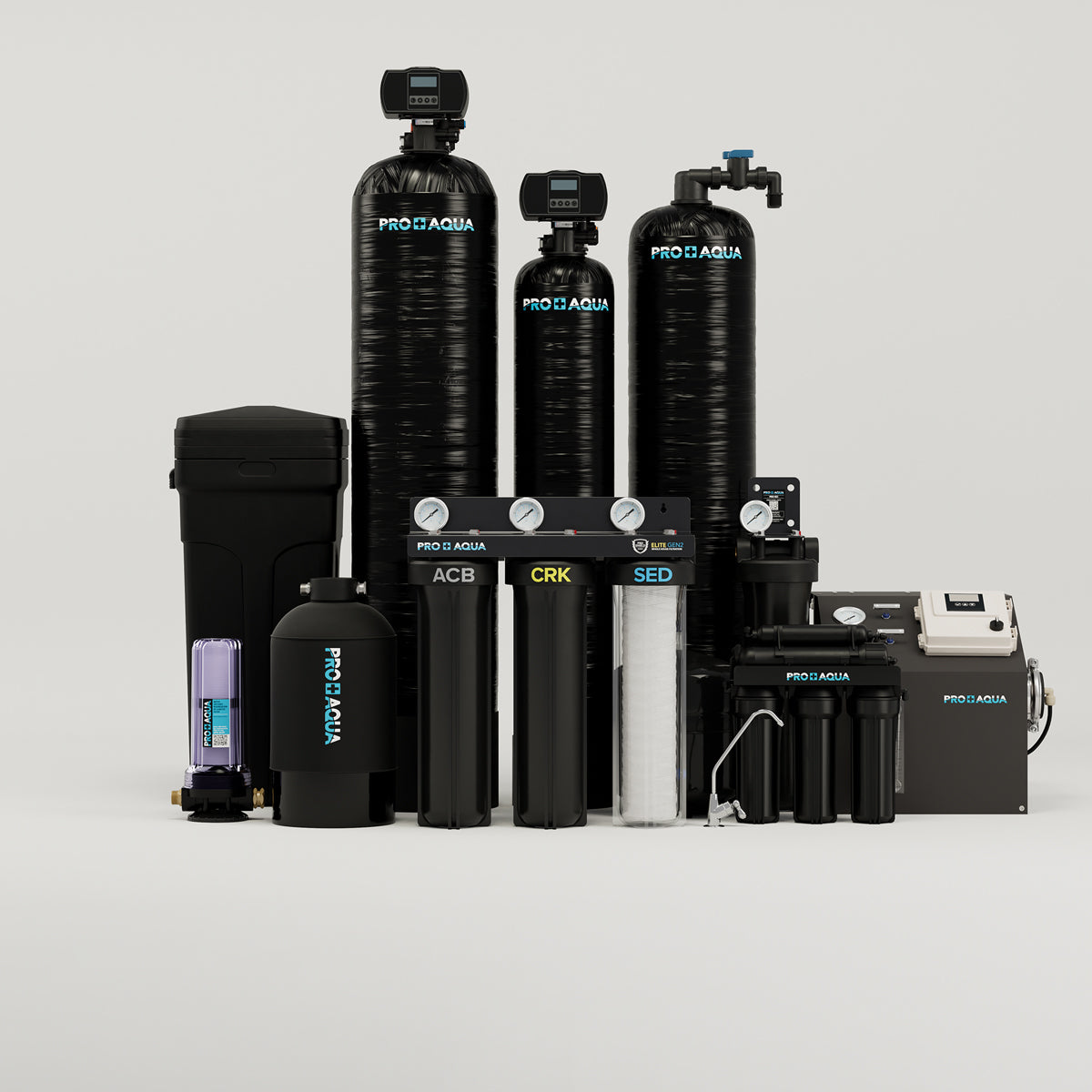When we think of the water we use in our homes every day – water for drinking, for bathing, and for cooking—we rarely give much thought to its safety. Most Americans take their water quality for granted. Unfortunately, contamination is an all-too-real possibility whether we receive our water from municipal sources or from private wells. Metal contamination is a growing health threat; these heavy metals in water have the potential to cause harm to ourselves and our loved ones. What kinds of metal contaminants are found in water, and how can we remove them? In this guide, we will explore heavy metals as water contaminants and how whole house water filter systems can ensure safe, clean water for our everyday lives.
What are Heavy Metals?
Metals are among the trace elements used in the human body to support cellular function and metabolism. Just as we need vitamins and minerals to remain healthy, certain metal elements are essential components of our lives. High levels of metals – particularly heavy metals – pose a serious health threat that can cause severe illness, organ failure, or death.
What are heavy metals? Scientists define these as naturally-occurring metals with densities at least five times greater than water. Heavy metals include:
- Chromium
- Mercury
- Lead
- Nickel
- Cadmium
- Arsenic
- Thallium
- Copper
- Zinc
- Selenium
Of these metals, arsenic, cadmium, mercury, lead, and chromium can be the most toxic, even in small amounts, making them a priority as a public health threat. These “big five” metal elements have been implicated in hundreds of thousands of human illnesses around the world.
Heavy metals in water may be found in their elemental form or as compounds with other elements. Because these metals have been used in industrial, agricultural, and commercial applications for hundreds of years, they are distributed widely in water sources and soil/subsurface environments.

Where do Heavy Metals Come From?
Heavy metals in water can come from numerous sources. These metals are used widely in applications ranging from industrial manufacturing to pharmaceutical production, in agriculture, and in medical/technology developments. Metals naturally occur in soils and geological formations both at the Earth’s surface and underground. When water becomes contaminated from high levels of heavy metals, contaminant sources include:
- Industrial runoff
- Agricultural runoff
- Atmospheric pollution
- Weathering of geologic formations due to water activity and winds
- Mining
- Metal smelting or manufacturing
- Pharmaceutical wastes
- Domestic wastes
In the home, older plumbing pipes made from metals like copper or lead may leach metal ions into the water supply. With whole house water filter systems in place, these metals generally do not pose a significant exposure threat. Even homes with new plumbing may have high levels of heavy metals in water, and without laboratory testing, homeowners may not be aware of the dangers they face when they use water supplies for cooking, cleaning, and drinking.
What are the Health Dangers of Heavy Metals in Water?
It is important to remember that certain heavy metals, including cobalt, copper, selenium, and zinc, are vital for healthy human life. These metal elements support metabolism and organ function at the proper levels. When those levels are exceeded, however, serious health issues may arise.
Toxicity of heavy metals in drinking water depends on several factors, including concentration, means of exposure, and physiological characteristics of individuals exposed to these elements. In general, human exposure to high levels of heavy metals can result in:
- Systemic organ failure (failure of multiple organs)
- Higher rates of certain cancers in the kidneys, bladder, liver, and skin
- Cognitive impairments
- Delayed development of brain and nervous system tissues in infants and toddlers
- Changes in metabolic processes
- Higher rates of birth defects
- Development of cardiovascular diseases
- Gastrointestinal disorders
Prolonged or high levels of exposure to heavy metals in drinking water can result in hospitalizations and expensive medical care. Because these elements are persistent, they bioaccumulate in cellular tissues until the body begins to break down. Organ failure, cancers, and death often follow exposure to excessive levels of heavy metals.
Symptoms of Heavy Metal Poisoning
When heavy metals in drinking water are present, there are often no telltale signs of contamination. Laboratory testing is required to determine what contaminants are present and their levels. Consuming water contaminated with heavy metals can result in severe illness. Symptoms of heavy metal poisoning from contact with contaminated water include:
- Confusion
- Dizziness
- Nausea
- Numbness or tingling in the arms and legs
- Abdominal pain
- Memory loss
- Headaches
- Diarrhea
- Inflammation of the lungs and gastrointestinal system
Over time, consumption of water contaminated with heavy metals can lead to severe illness. A whole house water filter system can remove these metals from water, helping to keep you and your family safe from metal poisoning.

Whole House Water Filter Systems: Removing Heavy Metals
Now that we have gained an understanding of what heavy metals are and the threats to human health they represent, how can one ensure drinking water is safe from this dangerous contamination? A whole house water filter system is designed to remove contaminants, including metals like lead, mercury, cadmium, and arsenic.








Leave a comment
This site is protected by reCAPTCHA and the Google Privacy Policy and Terms of Service apply.